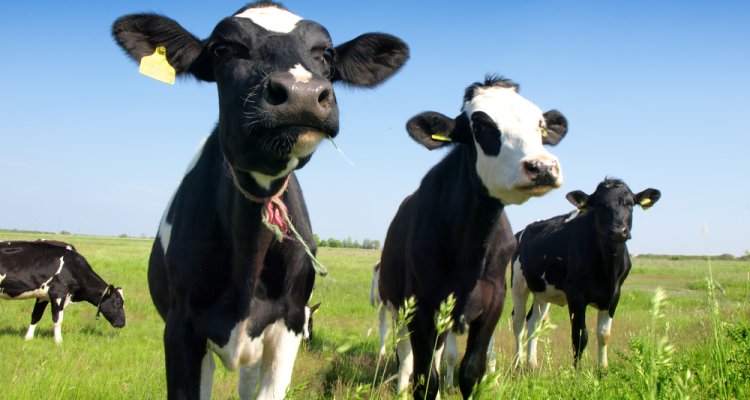
Mad cow disease (BSE)
BSE, also known as mad cow disease, stands for bovine spongiform encephalopathy. This infectious disease affects the central nervous system of cattle. Wageningen Bioveterinary Research (WBVR) conducts research into this disease.
BSE belongs to the group of transmissible spongiform encephalopathies (TSEs). It is caused by prions; proteins that can deform the normal proteins in the brain. Mad cow disease spreads primarily through reuse of animal proteins in feed.
In 1986, BSE was first found in the United Kingdom where it resulted in disaster for cattle farmers the following years with over 180,000 infected cows. From the UK, mad cow disease spread to other countries. In the Netherlands the last case of BSE was reported in January 2011.
This infectious cattle disease also causes a variant of Creutzfeldt-Jakob disease; a deadly human brain disease. This could be caused by eating contaminated organs from infected cattle (particularly brains).
BSE infection
BSE and other TSEs are caused by prions; proteins that can deform the normal proteins in the brain. Prion diseases can be caused by infection, but also by small changes in the genes that produce these proteins. Prions are very resistant to heating and disinfection, and are also resistant to protein-splitting enzymes.
The disease is seen in adult cattle, mainly at the age of three years and older. There are concerns that it may also occur in other small ruminants. Until now, however, only one case of the disease has been detected under natural circumstances in a French goat And one case in a British goat. No BSE cases have been reported in sheep so far.
Clinical signs BSE
The central nervous system of the animals is affected by BSE. Microscopically small cavities develop in the brains of the animals, which cause behavioural changes (startling, hypersensitivity to light, sound, touch) and movement disorders. The period between the infection and the first symptoms is usually several years. Due to progressive paralysis, the disease eventually leads to death.
The disease begins gradually and is therefore difficult to diagnose in the early stages. Especially in the early stages, the symptoms of BSE can be easily confused with symptoms of metabolic diseases and other diseases affecting the central nervous system.
Usually, the mad cow disease starts with behavioural changes, such as seeking isolation, hypersensitivity to noise and other stimuli, after which severity gradually increases. The animal can become unmanageable, can panic and sometimes become aggressive. Teeth grinding and muscle twitching have also been observed. Movement disorders also occur: a swinging gait, hindlimb ataxia, and at a later stage difficulty in turning and frequent falling.
Spread of BSE
Epidemiological data have clearly shown that BSE spreads primarily through the reuse of animal proteins (cattle proteins) in animal feed. This results in a circular flow of animal material in which pathogens can multiply. This problem was recognised long ago. As a result, sterilisation has become an important part of processing animal cadavers.
Other transmission routes may also be possible, including transmission from mother cow to calf at birth and transmission via the environment, but none of these transmission routes have been proven conclusively. If the infection can be transmitted via these other routes, the role of these routes is very limited.
It is assumed that the outbreak of BSE was caused by feed concentrates that included insufficiently sterilised meat and bone meal originating from carcasses of sheep or cows that were infected with prion disease. In Great Britain, the processing method for carcasses was changed in the early 1980s, and a second heat treatment with steam was discontinued. Because BSE prions are resistant to high temperatures, they were no longer eliminated during processing, and it became possible for them to contaminate meat and bone meal. This possibly contaminated meat and bone meal was included in feed concentrate for cattle.
Animals contracting BSE became infected especially during their first year of life by eating contaminated concentrate.